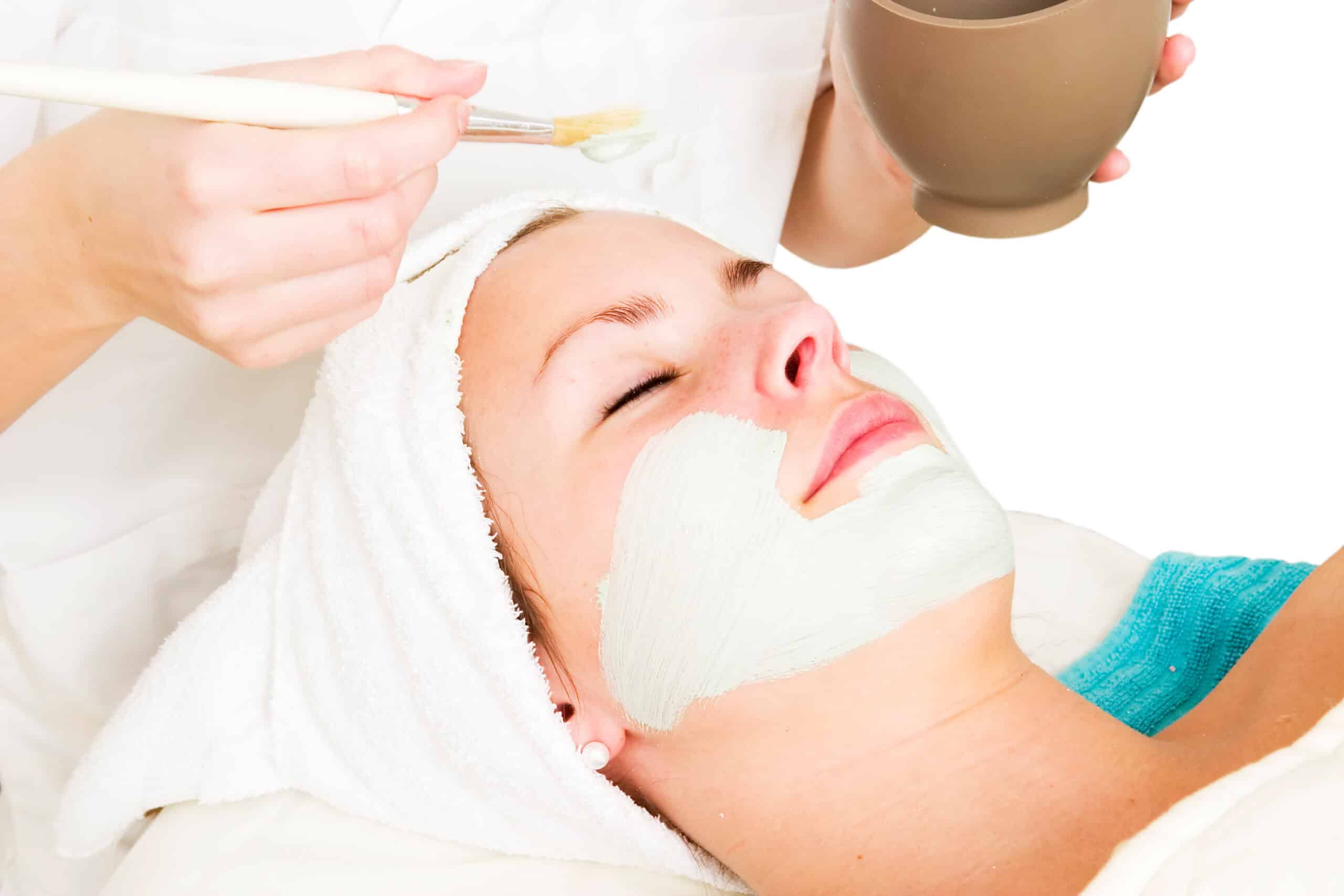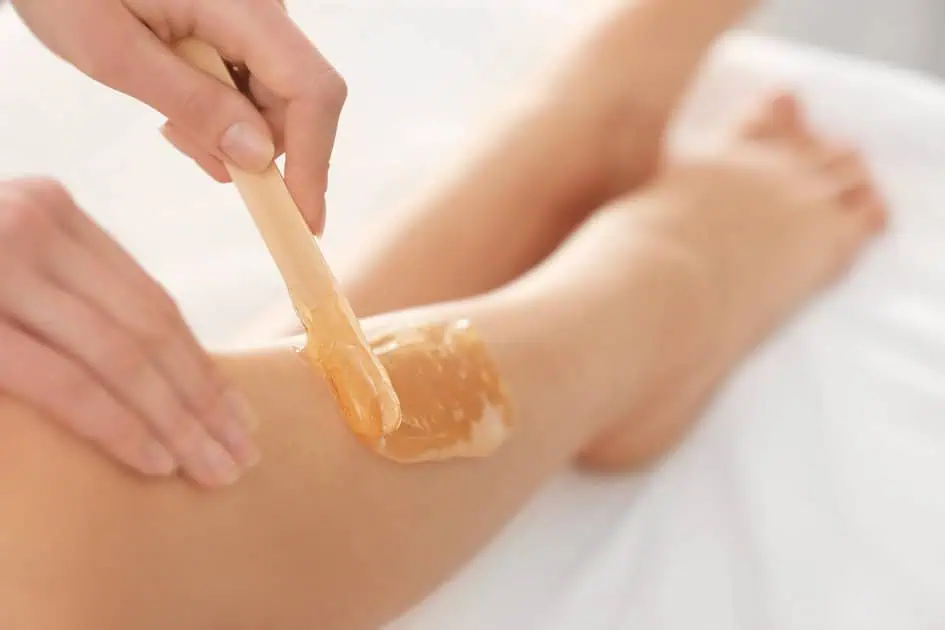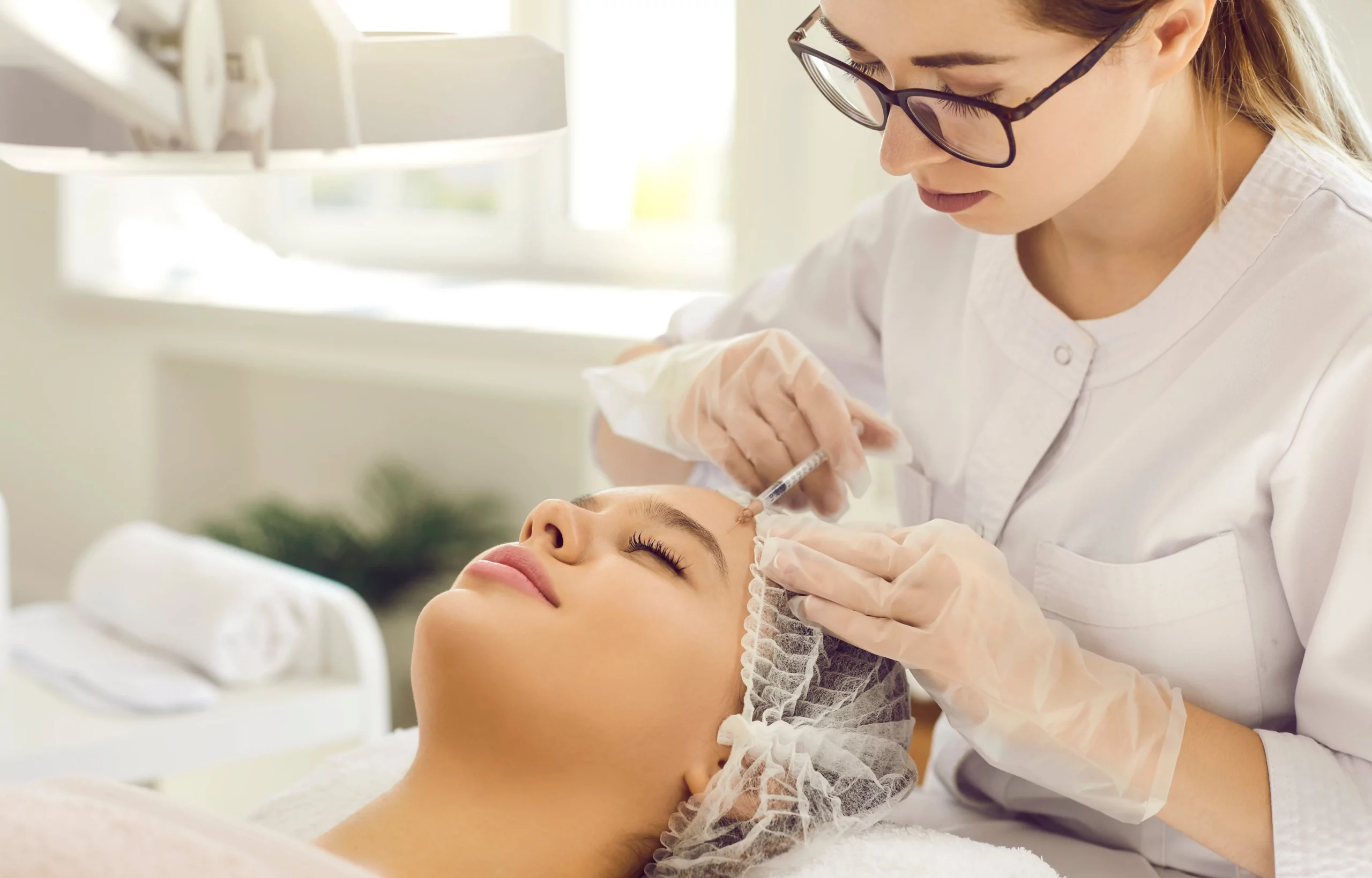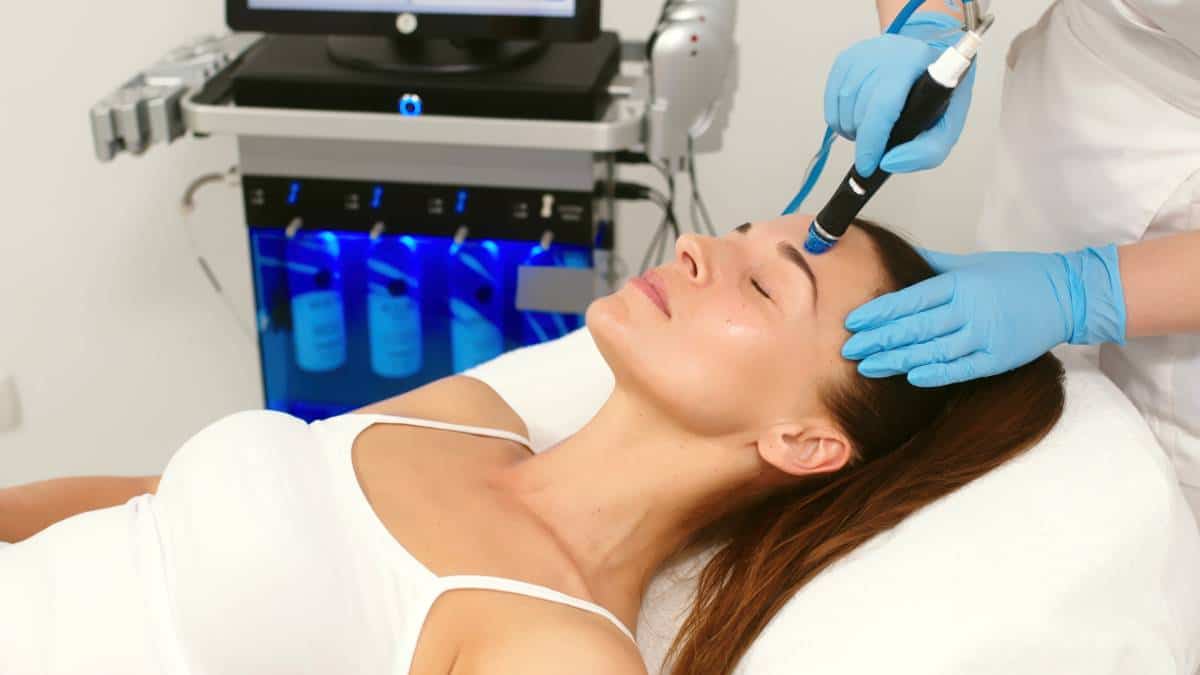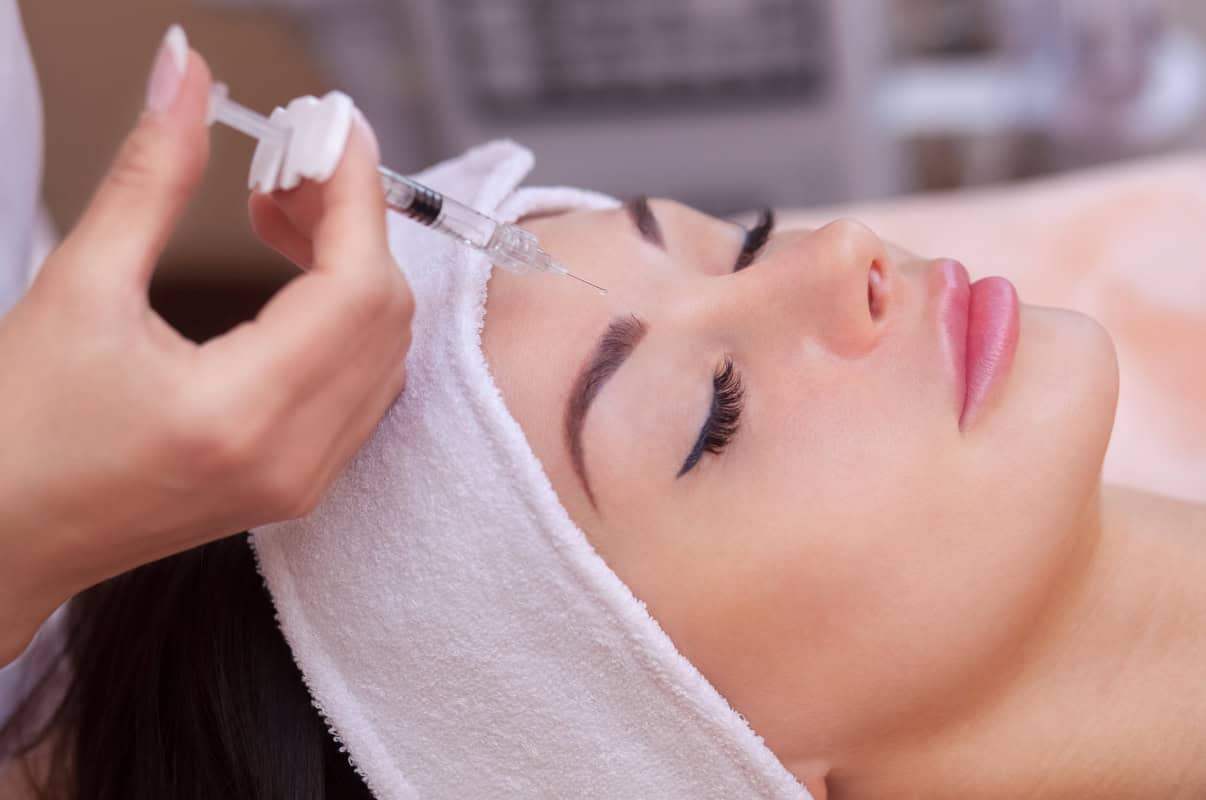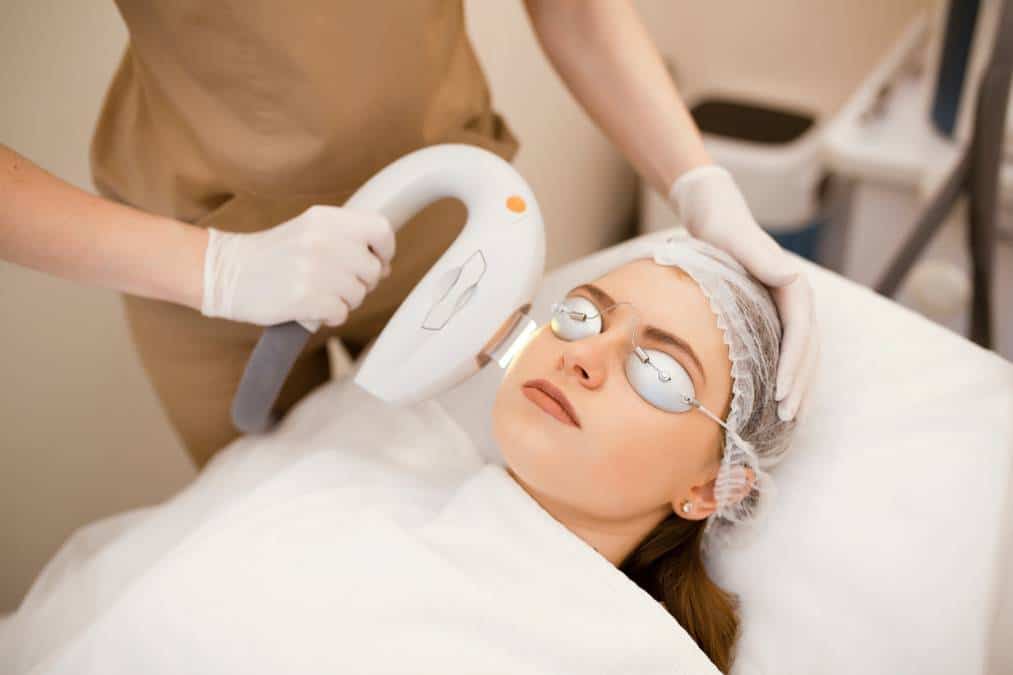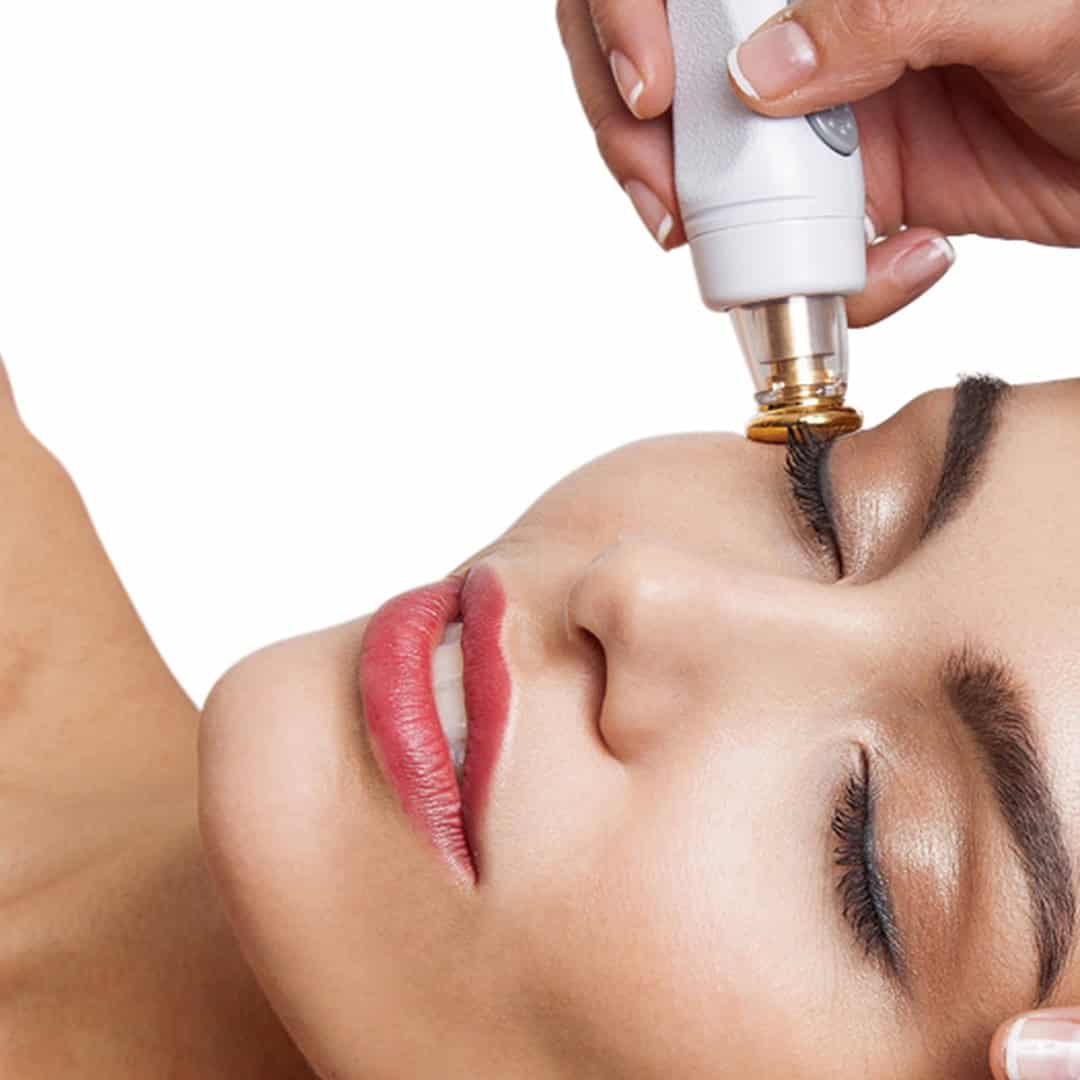Depending on each person’s case, more than serums and skin care products will be required sometimes. That is why some choose surgical or non-surgical procedures that will enhance their skin health. Photofacials are significant steps forward in your skincare journey when discussing non-surgical procedures!
Photo facials
Photofacials, photorejuvenation, or IPL (Intense Pulsed Light) therapy are non-invasive cosmetic procedures used to improve the appearance of the skin and treat certain skin conditions. The treatment utilizes intense pulses of light to target specific areas of the skin, helping to reduce signs of aging and various skin imperfections.
Here’s how photofacials typically work:
- Preparation: Before the procedure, a consultation with a dermatologist or licensed practitioner is essential to assess your skin’s condition and determine if you are a suitable candidate for photofacials. They will also discuss your expectations and any potential risks.
- Procedure: During the photofacial, a handheld device emits intense pulses of light over the target area of your skin. The light is absorbed by melanin (pigment) in dark spots and areas of hyperpigmentation, as well as by hemoglobin (the red pigment in blood vessels). This process helps to break down pigmentation and constrict blood vessels.
- Treatment Areas: Photofacials are commonly used to address skin concerns like age spots, sun damage, fine lines, wrinkles, enlarged pores, redness, rosacea, and acne scars. They are often performed on the face, neck, chest, and hands.
- Sensation and Downtime: The procedure may cause a feeling of snapping against your skin. While discomfort is usually minimal, some people may experience mild redness or swelling afterward. However, there is typically little to no downtime, and most individuals can resume their regular activities immediately.
- Number of Sessions: The required sessions can vary depending on individual skin conditions and the desired results. Typically, a series of treatments spaced a few weeks apart is recommended for optimal outcomes.
- Results: Over time, as the skin heals and regenerates, you may notice improvements in skin texture, tone, and pigmentation. Photofacials can help achieve a more youthful and even complexion.
- Maintenance: To maintain the results, periodic touch-up treatments may be necessary, especially if you regularly expose to the sun or have ongoing skin concerns.
Advantages
Photofacials offer several advantages as a non-invasive cosmetic procedure for improving the skin’s appearance and treating certain skin conditions. Here are some of the key advantages:
- Minimal Discomfort: While the procedure may cause some mild discomfort, it is generally well-tolerated by most individuals. Using topical anesthetics or cooling gels can further reduce any potential pain.
- Non-Invasive: Photofacials are non-surgical and non-ablative, meaning they do not require incisions or the removal of the skin’s outer layers, making the procedure less risky and eliminating the need for significant downtime or recovery.
- Versatile Treatment: Photofacials can address many skin concerns, including sun damage, age spots, fine lines, wrinkles, redness, and acne scars. They are effective on various body parts, such as the face, neck, chest, and hands.
- Quick Procedure: Photofacials are relatively quick, often taking 30 minutes to an hour per session, making them convenient for busy individuals.
- Minimal Downtime: Since the treatment is non-invasive, little to no downtime is typically required.
- Stimulates Collagen Production: Photofacials can stimulate collagen production in the skin, promoting skin elasticity and firmness. This can help reduce the appearance of fine lines and improve overall skin texture.
- Safe for Most Skin Types: Photofacials can suit various skin types and tones. However, consulting with a qualified practitioner is essential to ensure the treatment is appropriate for your specific skin concerns.
- Gradual, Natural-Looking Results: The results of photofacials are typically gradual and natural-looking, which means the skin tone and texture improvements are manageable, allowing for a more subtle enhancement.
- Long-Term Benefits: While multiple sessions are usually recommended for optimal results, photofacials can provide long-term benefits. Regular maintenance sessions help sustain the improvements over time.
- Safe Combination with Other Treatments: Photofacials can be combined with other cosmetic procedures, such as chemical peels or microdermabrasion, to enhance the overall results and address specific skin concerns.
Risks
While photofacials are generally considered safe when performed by a qualified and experienced practitioner, there are some potential risks and side effects associated with the procedure. It’s essential to be aware of these risks before undergoing treatment. Some of the possible dangers of photofacials include:
- Hyperpigmentation: In some cases, photofacials can cause temporary hyperpigmentation, especially in individuals with darker skin tones, which may present as darker spots on the skin and can take several weeks to fade.
- Hypopigmentation: Conversely, some individuals may experience temporary hypopigmentation, leading to lighter areas of skin in the treated area. Like hyperpigmentation, this typically resolves over time.
- Blistering and Burns: In rare cases, intense light pulses can cause blisters or burns on the skin. This risk may be higher if the treatment is not appropriately calibrated or the practitioner needs to be more experienced.
- Scarring: While uncommon, there is a slight risk of scarring, mainly if the treated area is not adequately cared for post-treatment or if there are complications during the healing process.
- Eye Injury: If the treatment is performed near the eyes, there is a risk of eye injury. Proper eye protection, such as goggles or eye shields, should always be used during the procedure.
- Infection: As with any procedure that involves the skin, there is a small risk of infection. Practitioners should follow strict hygiene protocols to minimize this risk.
- Unsatisfactory Results: While photofacials can be effective for many skin concerns, individual results may vary. Some people may not achieve the desired outcomes or may require more sessions to see significant improvements.
- Sun Sensitivity: After the procedure, your skin may be more sunlight-sensitive. Hence, avoiding excessive sun exposure and using sunscreen diligently to protect your skin from potential damage is essential.
What products can you combine with photofacials?
Photofacials can be combined with various cosmetic procedures to enhance overall results and address multiple skin concerns simultaneously. Combining treatments can be a practical approach to achieving comprehensive skin rejuvenation. Some methods that can be combined with photofacials include:
- Chemical Peels: Chemical peels involve applying a chemical solution to the skin to exfoliate and improve its texture. When combined with photofacials, chemical peels can enhance skin tone, reduce fine lines, and address pigmentation issues.
- Microdermabrasion: Microdermabrasion is a non-invasive procedure using a device to exfoliate the top layer of the skin. Combining microdermabrasion with photofacials can enhance the removal of dead skin cells and improve light absorption during the photofacial.
- Fractional Laser Resurfacing: Fractional laser treatments use laser energy to target specific skin areas, promoting collagen production and improving skin texture. Combining this with photofacials can provide more comprehensive skin rejuvenation.
- Dermal Fillers: Dermal fillers can add volume to areas with lost collagen, such as fine lines, wrinkles, and hollow regions. When used with photofacials, the skin can appear more plump and youthful.
- Botox and Other Neurotoxins: Botox and other neurotoxins can relax muscles, reducing the appearance of dynamic wrinkles (wrinkles caused by facial expressions). Combining these treatments with photofacials can target both static and dynamic wrinkles effectively.
- Radiofrequency (RF) Treatments: RF treatments use radiofrequency energy to stimulate collagen production and tighten the skin. Combining RF with photofacials can provide a synergistic effect in improving skin texture and tone.
- Platelet-Rich Plasma (PRP) Therapy: PRP therapy involves using the patient’s platelet-rich plasma to stimulate collagen production and enhance skin rejuvenation. When combined with photofacials, PRP can boost the overall effectiveness of the treatment.
- Topical Skincare Products: Combining photofacials with specific topical skincare products, such as those containing antioxidants or skin-lightening agents, can help improve results and maintain the effects of the treatment over time.
- Laser Hair Removal: If you are seeking skin rejuvenation and hair removal, combining photofacials with laser hair removal sessions can address both concerns in a coordinated manner.
Maximize the benefits of photofacials by combining them with other skin treatments and choosing the right health provider! Check Moxie Med Spa today and ping them to reserve a session!
